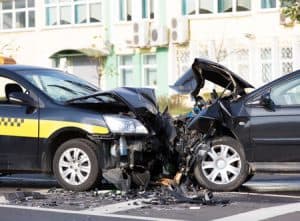[profileleft] [/profileleft]Many people feel somewhat uneasy when they climb into a taxicab for a ride. That’s likely at least in part because taxicab passengers are not in control of that trip. Not to mention, some passengers are quite nervous about the driving norms in different places. For the most part, people who experience these feelings are happy to pay their fare and move on with their days. Unfortunately, however, some passengers find themselves ensnared in taxi accidents that can lead to devastating consequences. Cities have studied options for minimizing these types of crashes, particularly cities where taxicabs are prevalent. Urban planning and traffic control measures are helpful steps, but there may be other possibilities. For instance, a recent study concluded that the color of taxicabs could make a difference with regards to rear-end crashes and other types of collisions. If so, it could change the way cab companies operate.
[/profileleft]Many people feel somewhat uneasy when they climb into a taxicab for a ride. That’s likely at least in part because taxicab passengers are not in control of that trip. Not to mention, some passengers are quite nervous about the driving norms in different places. For the most part, people who experience these feelings are happy to pay their fare and move on with their days. Unfortunately, however, some passengers find themselves ensnared in taxi accidents that can lead to devastating consequences. Cities have studied options for minimizing these types of crashes, particularly cities where taxicabs are prevalent. Urban planning and traffic control measures are helpful steps, but there may be other possibilities. For instance, a recent study concluded that the color of taxicabs could make a difference with regards to rear-end crashes and other types of collisions. If so, it could change the way cab companies operate.
Findings From the Taxi Accidents Study
Researchers tracked 4,175 yellow taxicabs and 12,525 blue taxicabs in Singapore for a period of 36 months. These taxis all belonged to the same fleet. The researchers also balanced factors such as age, miles driven and other variables in order to achieve an even comparison. Analyzing the data led to the following findings:
Taxi Positions
- 10.0 taxi accidents occurred per 1,000 yellow cab rides per month when the taxi was rear-ended.
- 13.4 taxi accidents occurred per 1,000 blue cab rides per month when the taxi was rear-ended.
- 9.8 taxi accidents occurred per 1,000 yellow cab rides per month when the taxi was trailing.
- 11.4 taxi accidents occurred per 1,000 blue cab rides per month when the taxi was trailing.
- 45.8 taxi accidents occurred per 1,000 yellow cab rides per month when the taxi was neither trailing nor following.
- 46.9 taxi accidents occurred per 1,000 blue cab rides per month when the taxi was neither trailing nor following.
Lighting Conditions
- 0.6 taxi accidents occurred per 1,000 yellow cab rides per month when no lighting conditions were reported.
- 0.2 taxi accidents occurred per 1,000 blue cab rides per month when no lighting conditions were reported.
- 41.7 taxi accidents occurred per 1,000 yellow cab rides per month during daylight hours.
- 43.7 taxi accidents occurred per 1,000 blue cab rides per month during daylight hours.
- 23.3 taxi accidents occurred per 1,000 yellow cab rides per month under street lighting.
- 27.8 taxi accidents occurred per 1,000 blue cab rides per month under street lighting.
What the Study Could Mean
The researchers used the data to formulate some additional findings, including:
- Drivers who drove both yellow and blue taxis were involved in 6.2 fewer accidents per month per 1,000 cab rides in yellow cabs as compared to blue cabs.
- This compares to the overall data above, which show that yellow cab drivers were involved in 6.1 fewer accidents per month per 1,000 cab rides in yellow cabs as compared to blue taxis.
- If the fleet mentioned above switched to all yellow taxis, it would reduce the number of annual taxi accidents in which it was involved by 917.
- 917 accidents avoided would lead to a savings of approximately $1.4 million per year.
In summation, the researchers concluded that driving yellow cabs is generally safer than driving blue cabs, almost regardless of the circumstances involved. Those interested in reading the full study can find it here.
Why Are Taxicabs Yellow?
It seems that only in relatively recent years that taxicabs have started to appear in more colors than yellow with any degree of prevalence. For generations, taxicabs were primarily yellow. Was there a reason for this norm? The answer is that yes, there was a reason, at least to an extent, although tis reason was not based on safety. This all dates back more than 100 years.
In 1915, a man named John Hertz founded a taxicab company in Chicago. He decided to paint his fleet of taxis yellow because he had read a study from the University of Chicago that concluded that yellow with a bit of red mixed in was the most visible color from a distance. Therefore, he called his operation the Yellow Cab Company. It turned out to be a very good idea, and it wasn’t the last for Mr. Hertz. He went on to found a rental car company that should be familiar to just about every consumer in the United States in Hertz Rent-a-Car System or Hertz Rental Car.
Are Yellow Vehicles Safer?
One of the conclusions someone could draw from the study above is that yellow taxicabs are involved in fewer accidents because they are bright and easy to see in just about any type of weather condition or time of day. While this sounds somewhat logical, there is a relative dearth of research relating to vehicle color and the risk of car accidents. However, researchers at Monash University in Australia completed a study in 2007 that looked at this possibility.
That research team compared different colors on the visibility scale relative to white, which is considered neutral. They found the following colored vehicles to be those most likely to be involved in crashes:
- Black
- Blue
- Gray
- Green
- Red Silver
The researchers also found yellow vehicles to have been involved in fewer crashes than the colors listed above. Anyone who would like to review that study can find it here.
How a San Diego Personal Injury Lawyer Can Help
This information doesn’t necessarily mean that everyone should start driving vehicles that are either yellow or otherwise bright in color. It may mean, however, that brighter colors could make a difference in terms of crash risk. With regards to taxi accidents, passengers often face a difficult situation if they are injured. There are layers involved with dealing with the proper parties who may ultimately be responsible for damages that are incurred.
If you or someone you love has been harmed in a taxicab accident, you need to make sure you obtain the help of a San Diego personal injury lawyer who understands how to build a strong case for clients who have been wrongfully harmed. Contact Gomez Trial Attorneys today for a free case evaluation.







